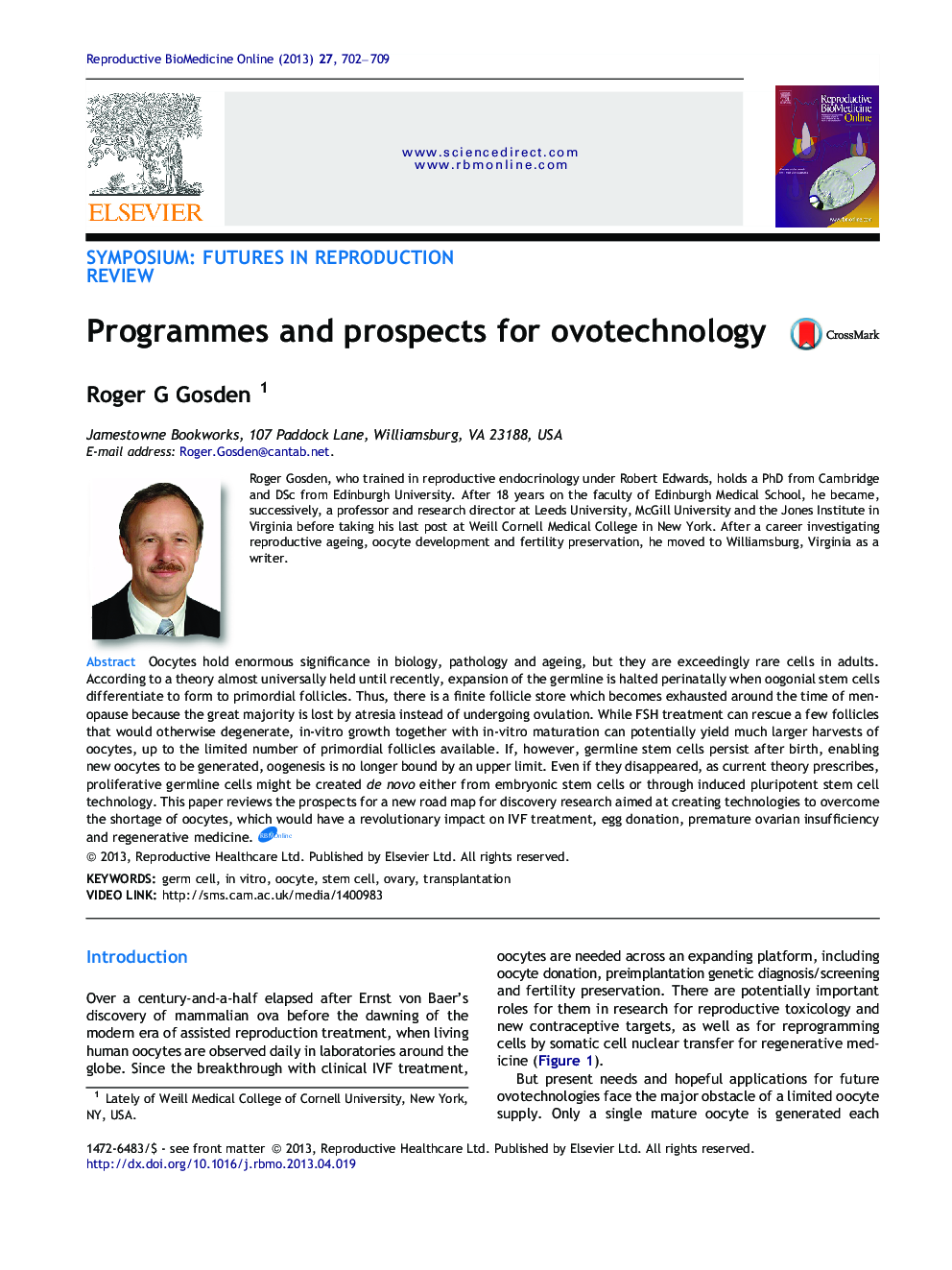| Article ID | Journal | Published Year | Pages | File Type |
|---|---|---|---|---|
| 3970225 | Reproductive BioMedicine Online | 2013 | 8 Pages |
Oocytes hold enormous significance in biology, pathology and ageing, but they are exceedingly rare cells in adults. According to a theory almost universally held until recently, expansion of the germline is halted perinatally when oogonial stem cells differentiate to form to primordial follicles. Thus, there is a finite follicle store which becomes exhausted around the time of menopause because the great majority is lost by atresia instead of undergoing ovulation. While FSH treatment can rescue a few follicles that would otherwise degenerate, in-vitro growth together with in-vitro maturation can potentially yield much larger harvests of oocytes, up to the limited number of primordial follicles available. If, however, germline stem cells persist after birth, enabling new oocytes to be generated, oogenesis is no longer bound by an upper limit. Even if they disappeared, as current theory prescribes, proliferative germline cells might be created de novo either from embryonic stem cells or through induced pluripotent stem cell technology. This paper reviews the prospects for a new road map for discovery research aimed at creating technologies to overcome the shortage of oocytes, which would have a revolutionary impact on IVF treatment, egg donation, premature ovarian insufficiency and regenerative medicine.Egg cells are not only central for fertility treatment but are urgently required for an expanding platform of research efforts and prospective ‘ovotechnologies’, including studies of the causes of infertility, novel contraceptive targets and tissue engineering for regenerative medicine. Clinical applications and progress are impeded by the scarcity of these cells. While conventional hormone treatment increases the number of eggs that can be harvested for IVF, it does not supply every need. Since the great majority never ovulate but instead degenerate in the ovary at earlier stages, eggs might be rescued in a culture environment. Proof of principle has already been established in laboratory animals, and culture methods are now being adapted for growing human eggs. But since the human ovary contains a finite number which declines with age and sets an upper limit on the size of a harvest, investigations are underway to produce eggs de novo from stem cells that may either already exist in the body or can be engineered in vitro. Success in these endeavours would likely have a revolutionary impact in reproductive technology and further afield.VIDEO LINK: http://sms.cam.ac.uk/media/1400983
